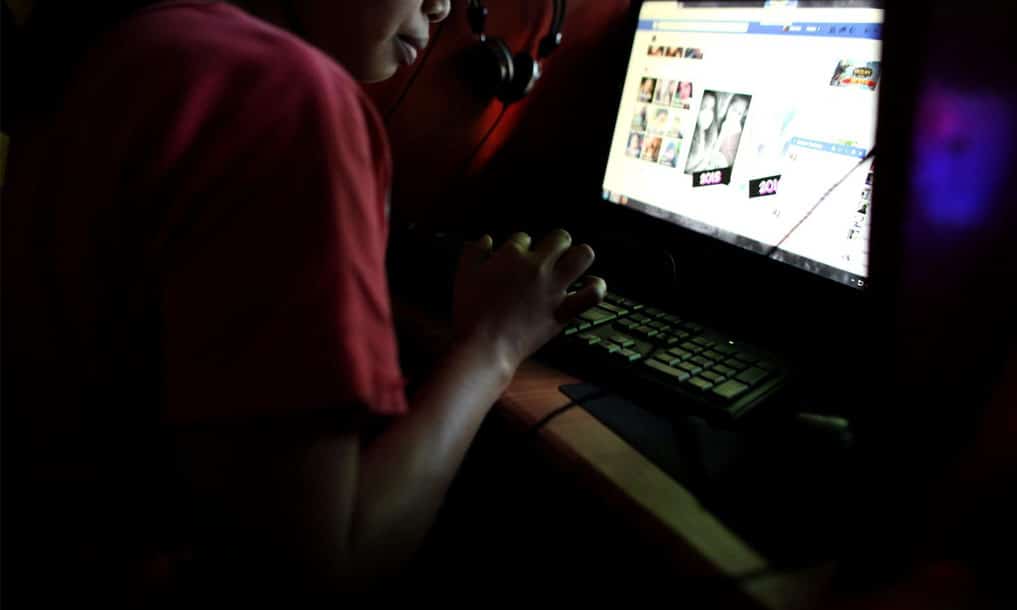Editor’s note: The story may contain information that may offend sensibilities. The source of the story intentionally refrained from filtering the terms, with the hopes of helping children share with trusted adults on what they may encounter online.
AN internet watchdog based in the United Kingdom has found shocking forms of sexual abuse made on children around the world and shared over the internet.
The Internet Watch Foundation (IWF) found that children as young as seven years old are being “coerced into inserting household items” like pencils and toothbrushes into their vaginas and anuses for the sexual gratification of online predators.
What is the IWF?
The IWF is a non-profit, technology-led charity that advocates for making the internet a safer place for children and adults.
It sifted through more than 1.8 million reports of sexual abuse on children being committed online in many countries around the world for the past 25 years.
In 2021, during the second year of the pandemic, the number of children who were abused online has gone up exponentially. The IWF said it processed 361,062 cases of online sexual abuse of children from tips or from their own sleuthing on the internet and dark web.
It said that in seven of every 10 of these cases (252,194 reports), there is an image of children of being sexually abused online.
900 exceptional ‘severe’ cases
One of the shocking findings of the IWF was that there were 896 “severe” images or videos of online sexual abuse of children which happened in just a matter of five days, i.e. from June 16 and 22 June 2022.
IWF analysts saw actual sexual penetration in children’s vagina or anuses, which the UK child protection law considers as Category A or the severe content of images.
The most common object used for sexual penetration were:
- child’s own finger (419)
- pen or pencil (232)
- toothbrush (75)
- hairbrush (39)
Other obscure objects found in the images included an egg whisk, a lint roller, and a USB cable.
Shocked? Can you handle this?
This part is sick, nauseating. Be warned.
The IWF said there are 18 images accounted which involved the child in sexual activity in what appears to be the family pet. Bestiality is far from what UK lawmakers thought as a possibility.
“To be clear, in the images showing bestiality, there was no penetration seen. Animals were most often seen licking a child’s genitals,” the IWF clarified.
Then comes five cases of sadism. These sadistic content were:
- Three images included pegs being used on the child’s genitals
- Two images showed the child drinking their own urine.
There were also six different occasions when penetration was done by another child.

Profile of kids in severe online sexual abuse
Three in every four of the images in severe online sexual abuse were children 11 to 13 years old, the age when puberty is just starting.
Then, 20 percent of these children were even younger — 7 to 10 years old, the age when they are just starting school. These three scenes horrified IWF analysts:
- A child was told to perform oral sex on another child
- A child was instructed to clip pegs on to their own genitals
- A child penetrating another child with a make-up brush.
The rest of the 5 percent were children aged 14 to 15 years old.

Girls make up 99 percent of the gender of kids in penetrative online sexual activity.
One image contained boys, and six images contained both boys and girls.

It is not clear where the kids and their offenders come from. It cannot say with certainty where the images were uploaded.
The IWF said it can only trace the physical server that the content is hosted on. Data shows more than half of the obscene images were hosted by servers from the European Union.

Who’s doing this to the children?
Criminals are lurking online via webcams, smartphone or other devices. They “groomed” or “coerced” children into performing sexual activities right in their own homes via an internet-connected device with a camera.
The abusers are remote to the child.
Then the video or images will be recorded, shared and distributed many times over by the predators, profiting from the victims’ trauma and abuse.
“This shocking data serves to blast away any illusion that this imagery is simply children naturally exploring their sexuality.
“The ordinariness of the items being used for the sexual pleasure of those watching, combined with the evidence of everyday childhood life in these images, drives home the stark reality of the situation. Predators are gaining unprecedented access to our children in places where we think they should be safe and protected,” IWF CEO Susie Hargreaves said.
Criminals get away from law enforcement by simply relocating the material from servers in one host country to those in another to evade detection and blocking.
The IWF has warned that this type of child sexual abuse, where a child is groomed and coerced over the internet, is by far “the fastest growing type of sexual abuse material seen by the IWF.”
Save the children
The IWF said it is not uncommon for their analysts to see children doing sexual penetration for years that they have been scouring the internet. But this is they published the details of their study to help find solution to this horrifying problem.
“We need to use the correct words to describe the actions of abusers – masturbation, anal and oral rape, penetration by objects – these words are still not considered acceptable terms by many in public and private discourse. Every incident of abuse is a crime and should not be minimized or dismissed as anything less, or downplayed because descriptions of the abuse might cause offense,” Professor Alexis Jay OBE, chair of the IWF inquiry, wrote.
Since half of the severe criminal content were monitored in EU servers, the IWF is proposing that the EU Parliament tackle this problem head on.
It quotedLucia Ďuriš Nicholsonová, Slovak Member of the European Parliament, as saying that negotiations have started to “harmonize” EU approach to tackling this “horrible crime.” She said differences in approach of EU member states are being “exploited by criminals” to keep this kind of content available online or profit from it.
“I believe that this new data strengthens the argument for bringing Member States into effective cooperation with service providers and NGOs. We need to act now to set up effective prevention programmes and child sexual abuse material detection mechanisms to prevent this problem, and the accompanying trauma and distress suffered by the victims from getting any worse,” Nicholsonová was quoted as saying.
banner photo courtesy: UNICEF








